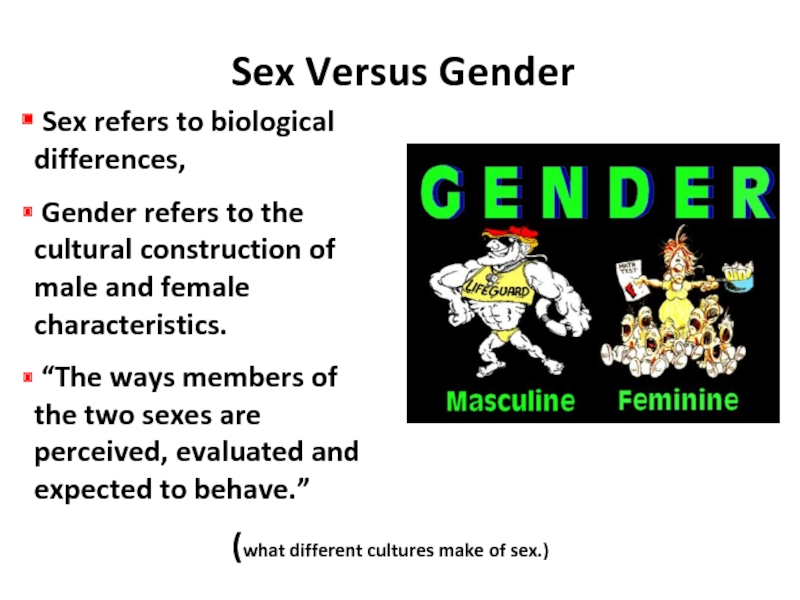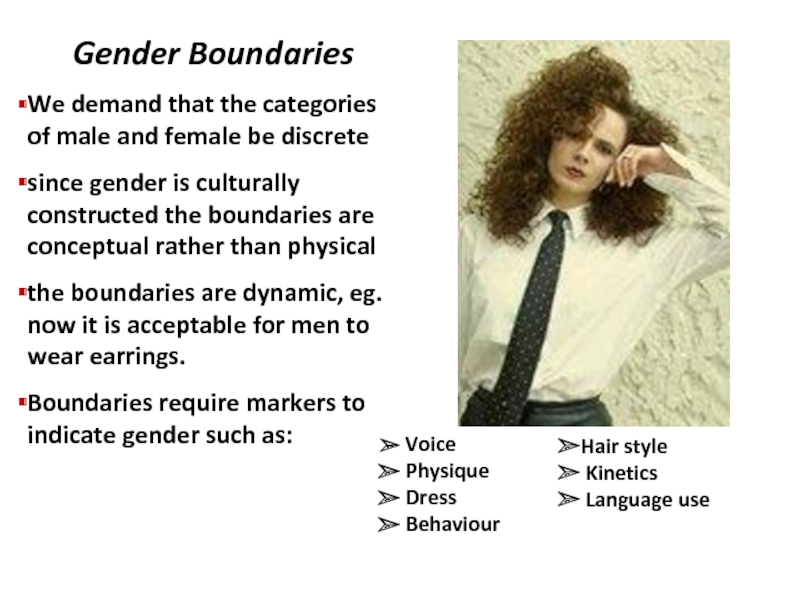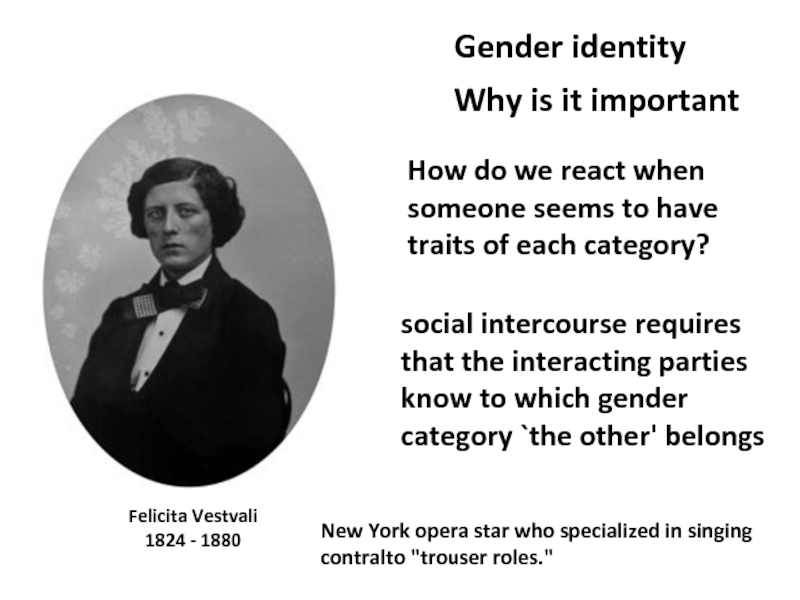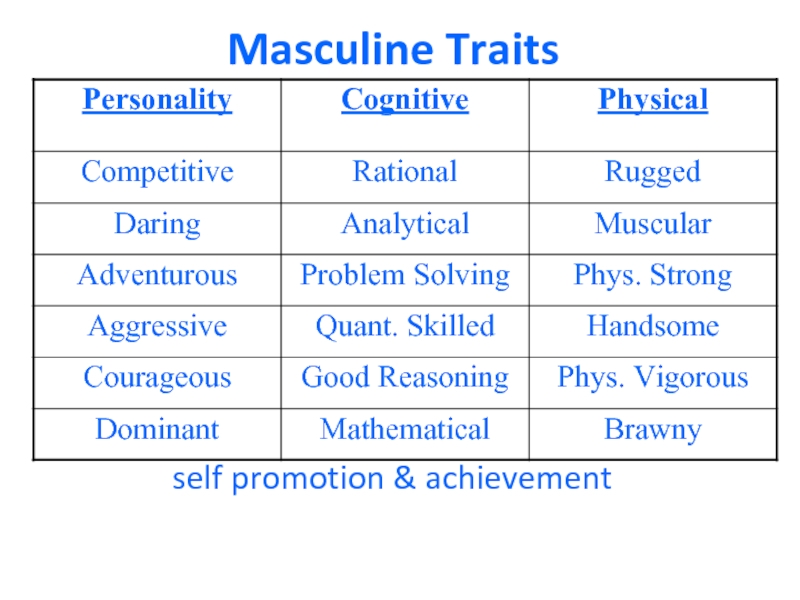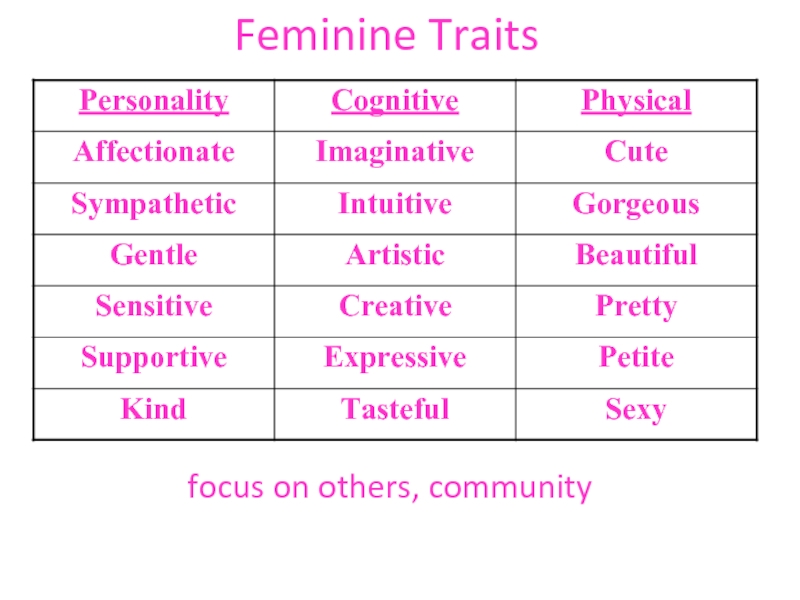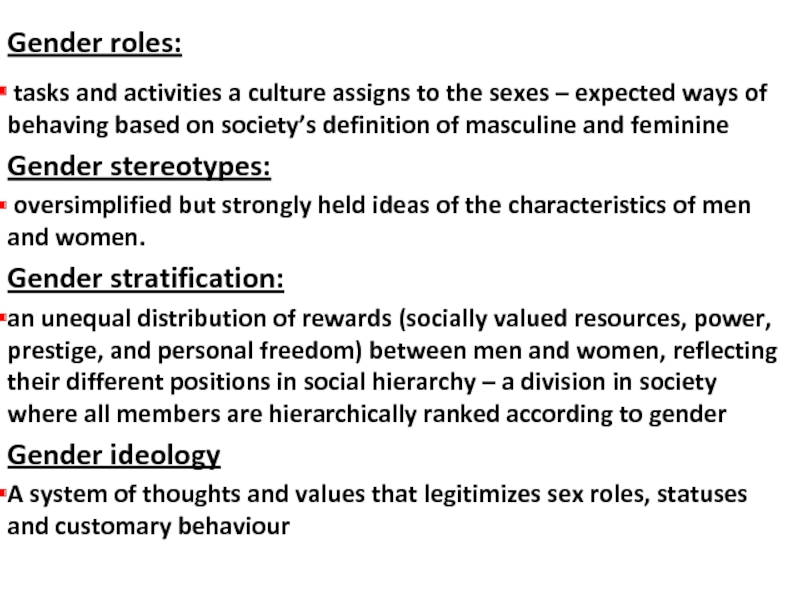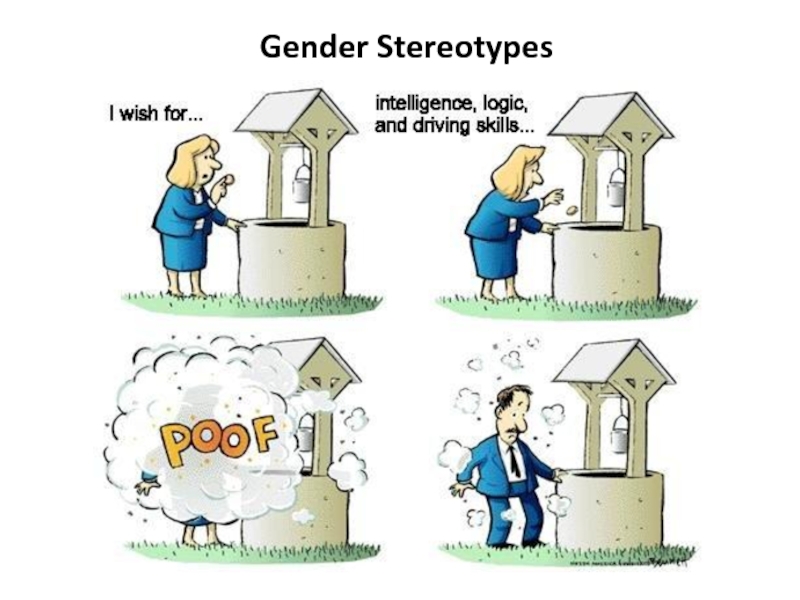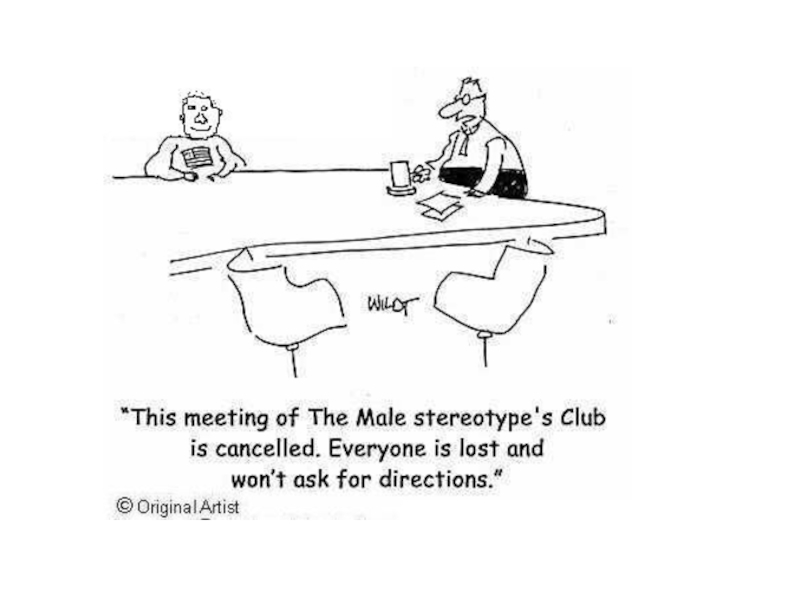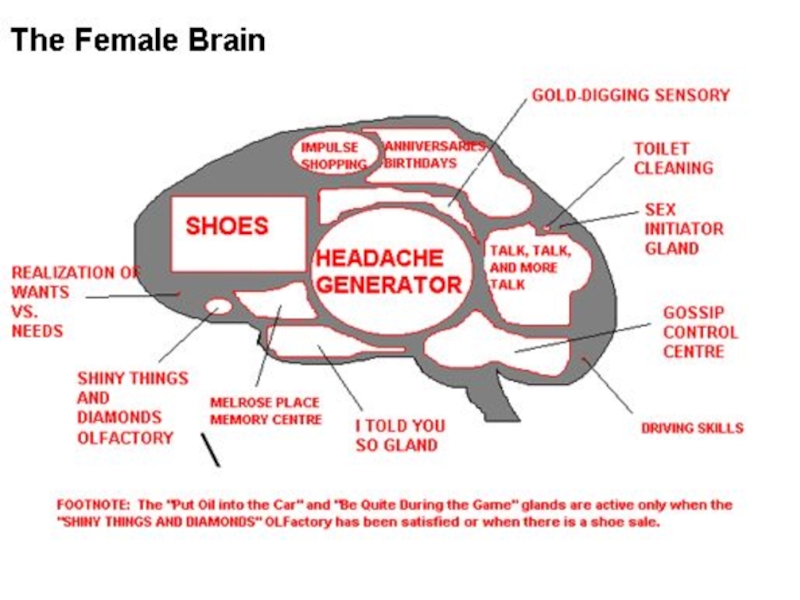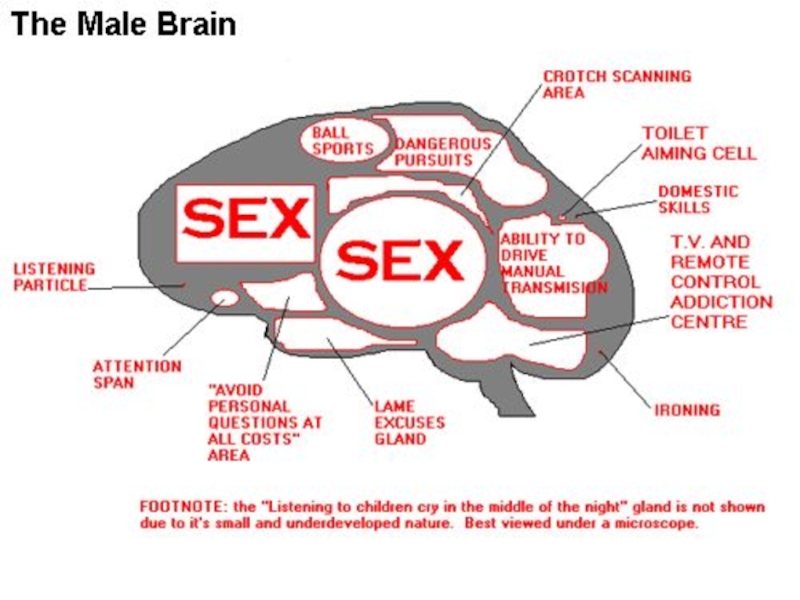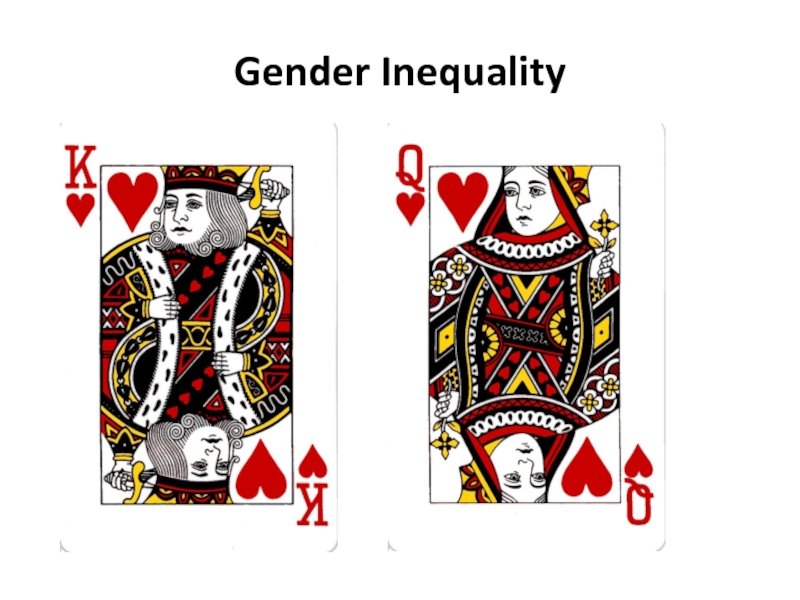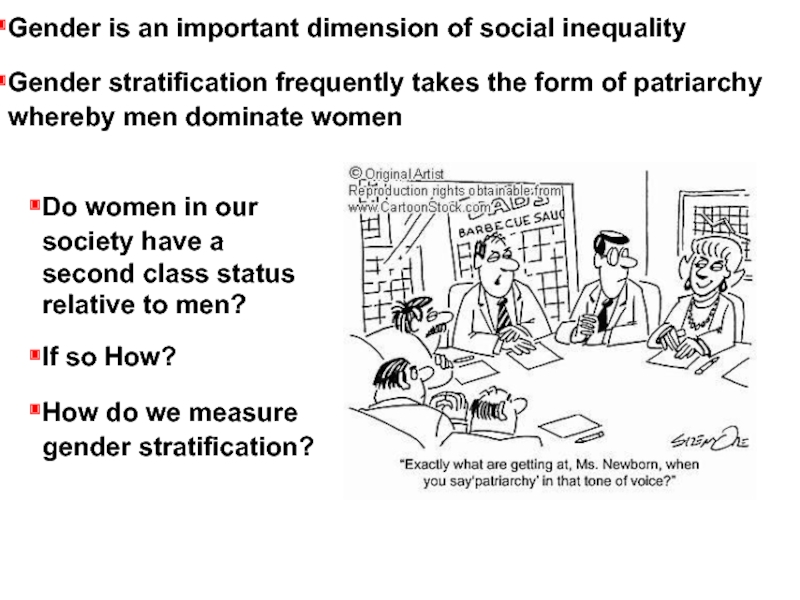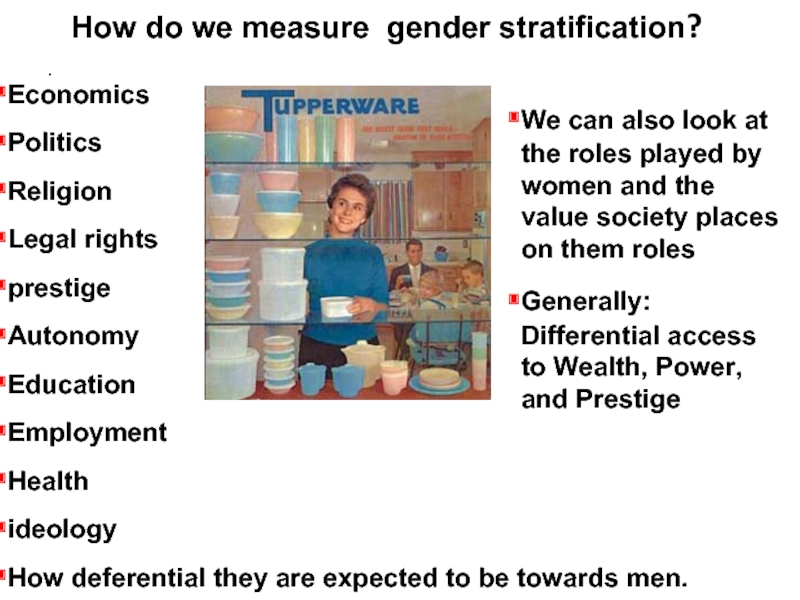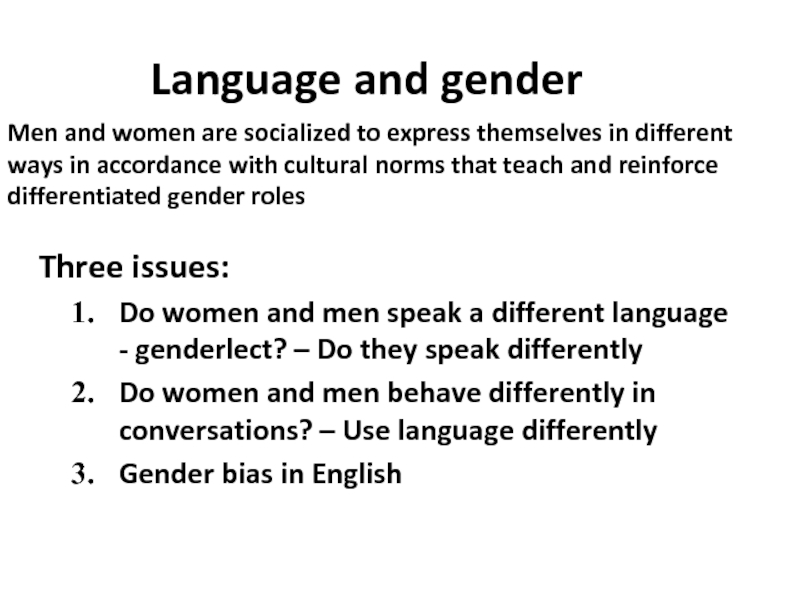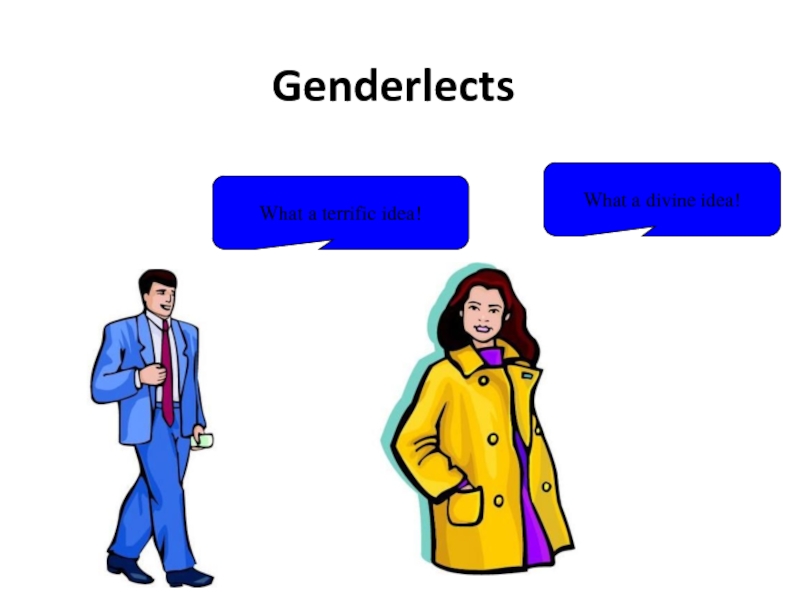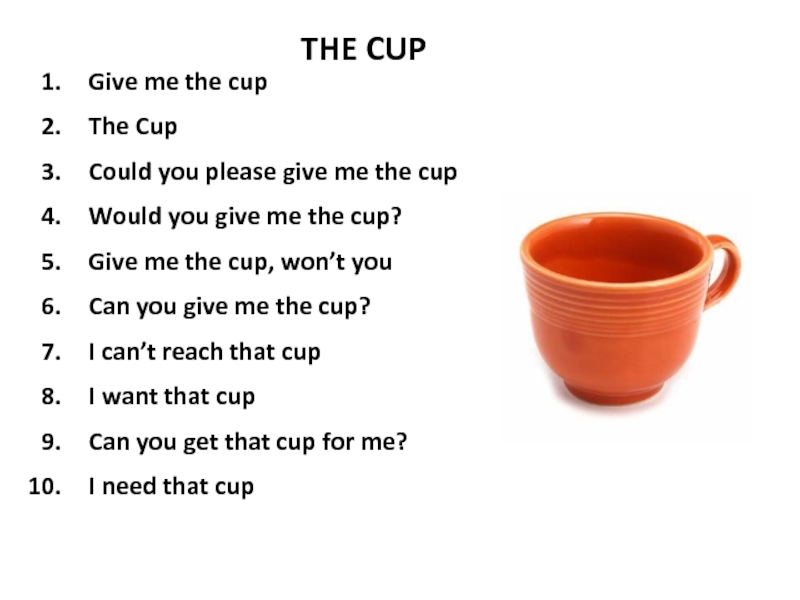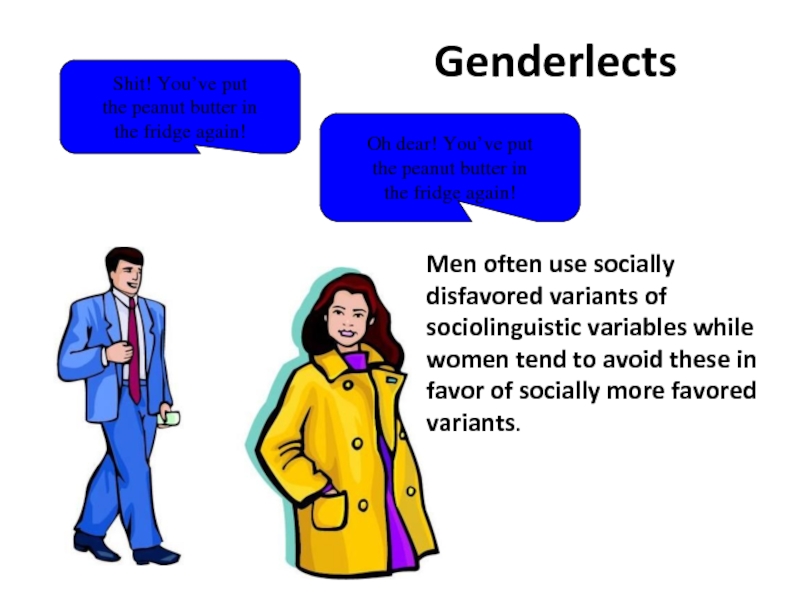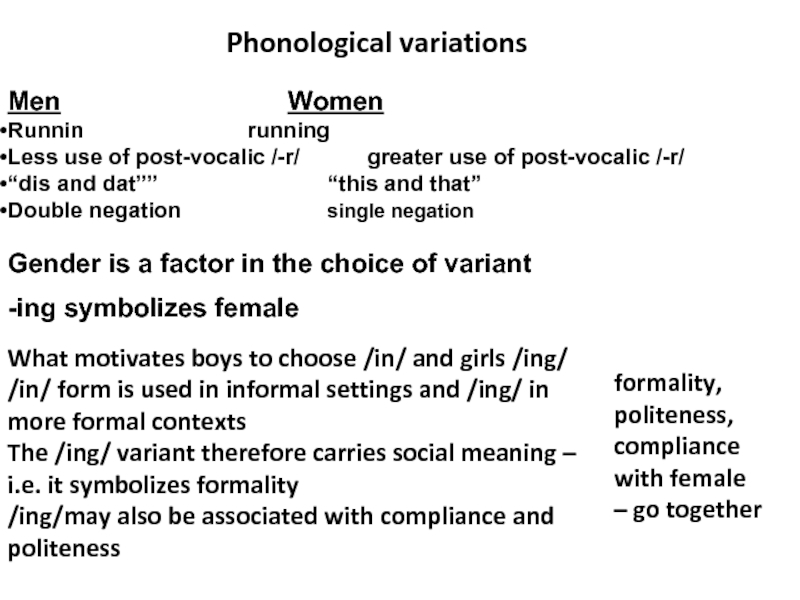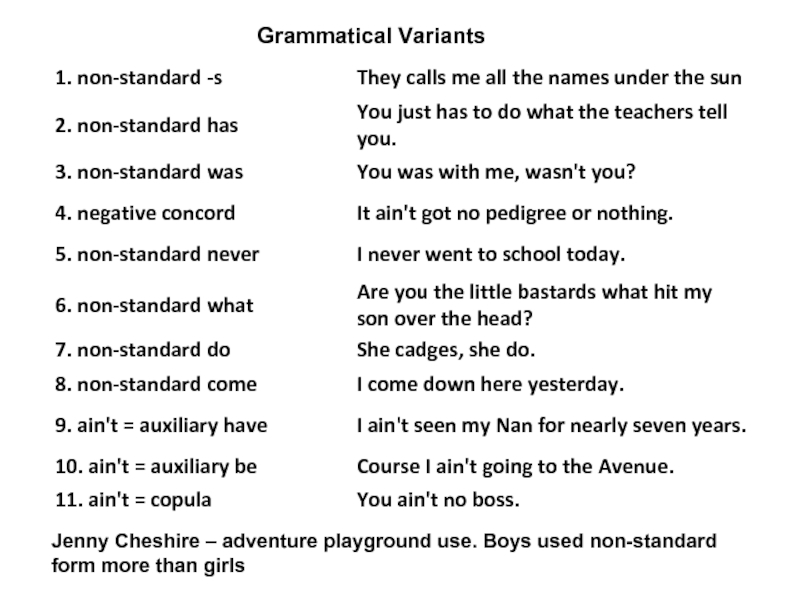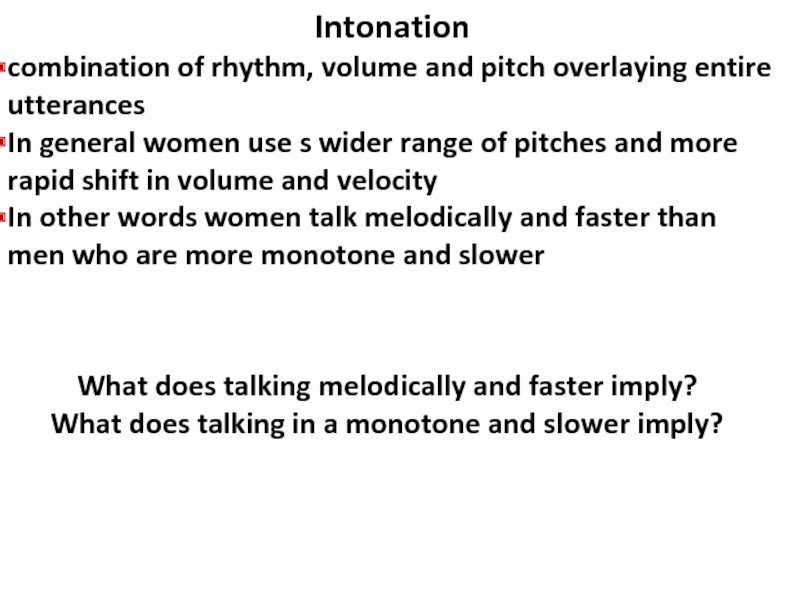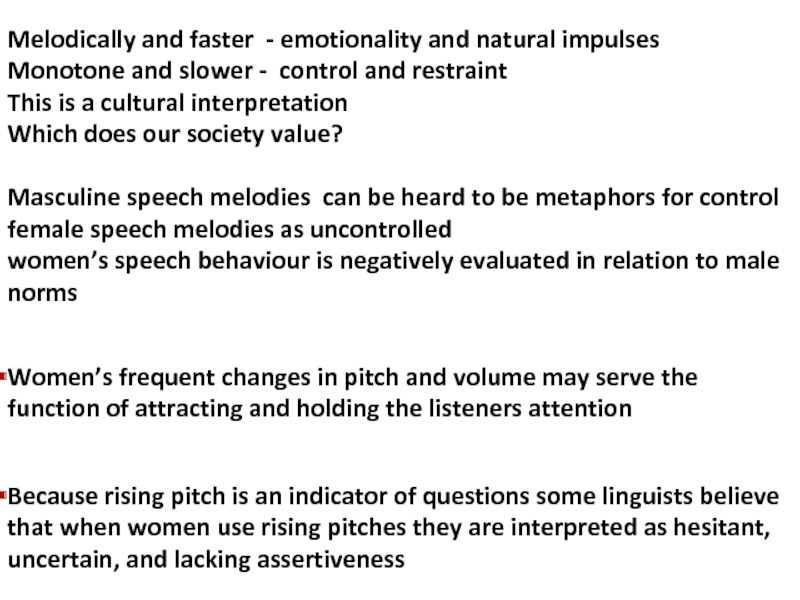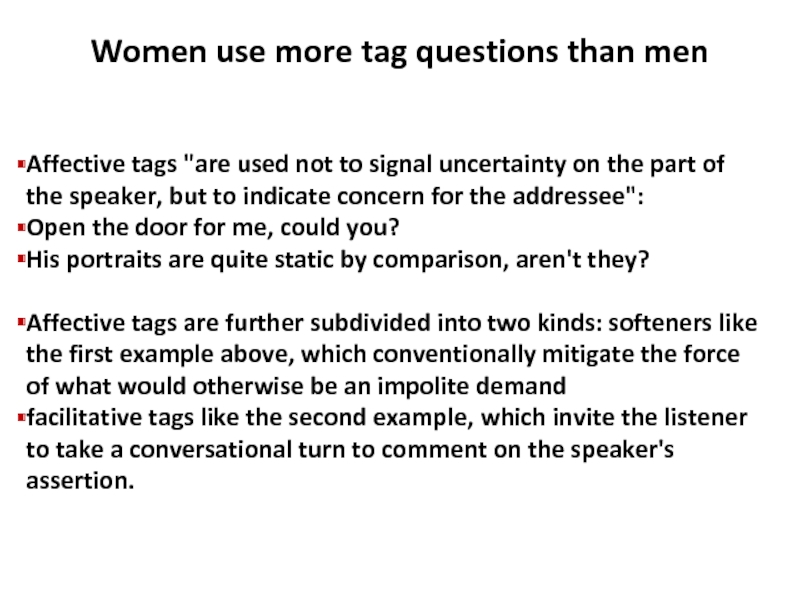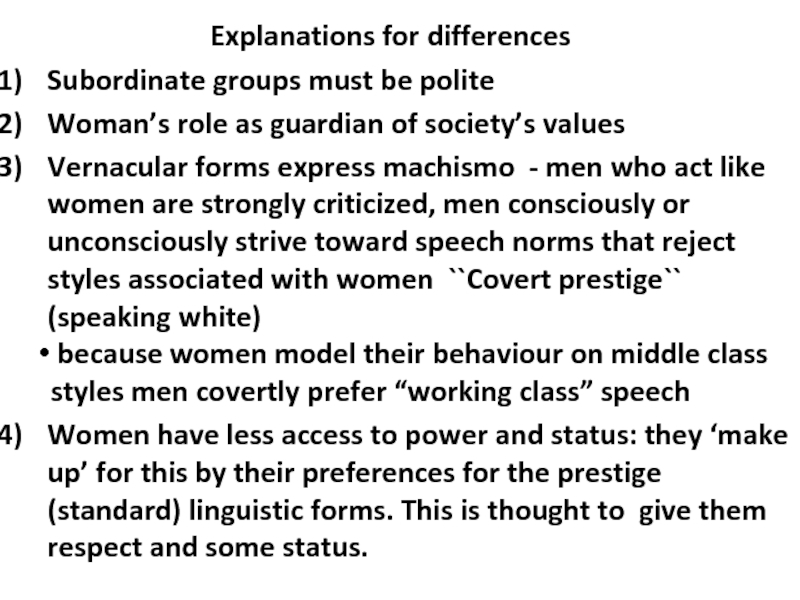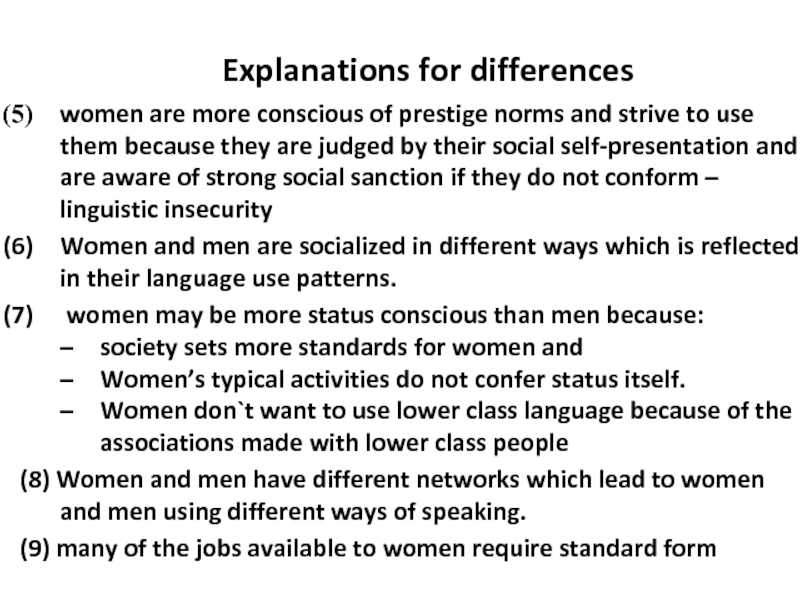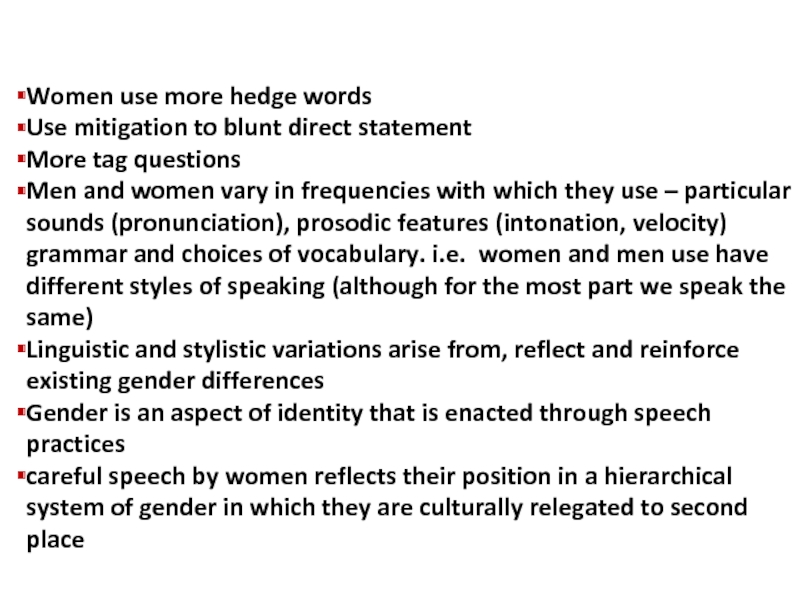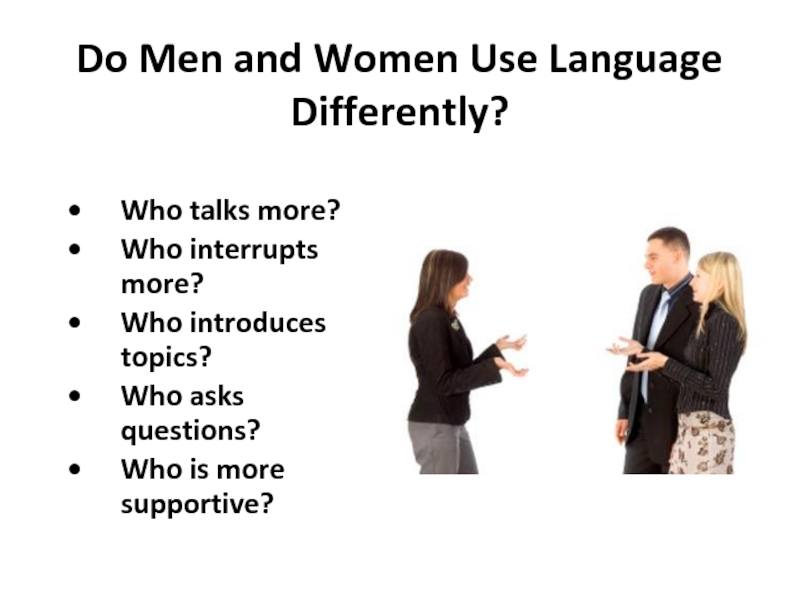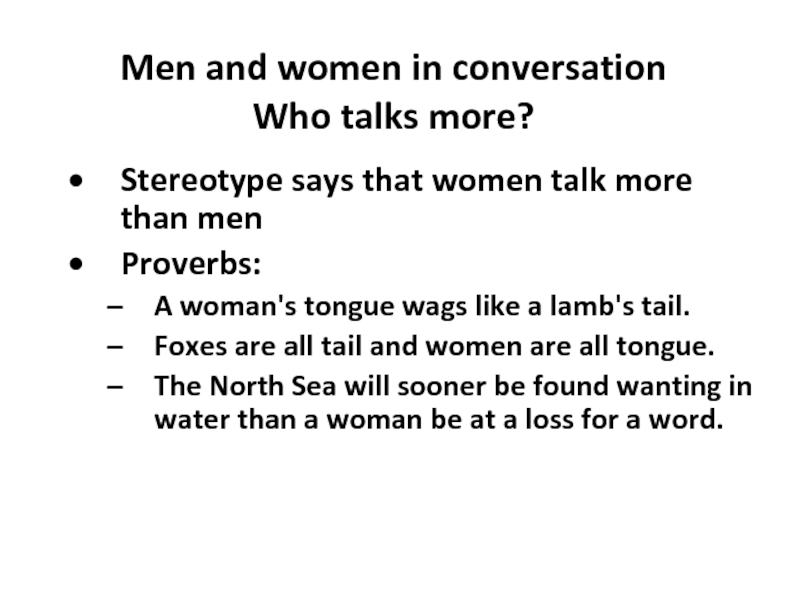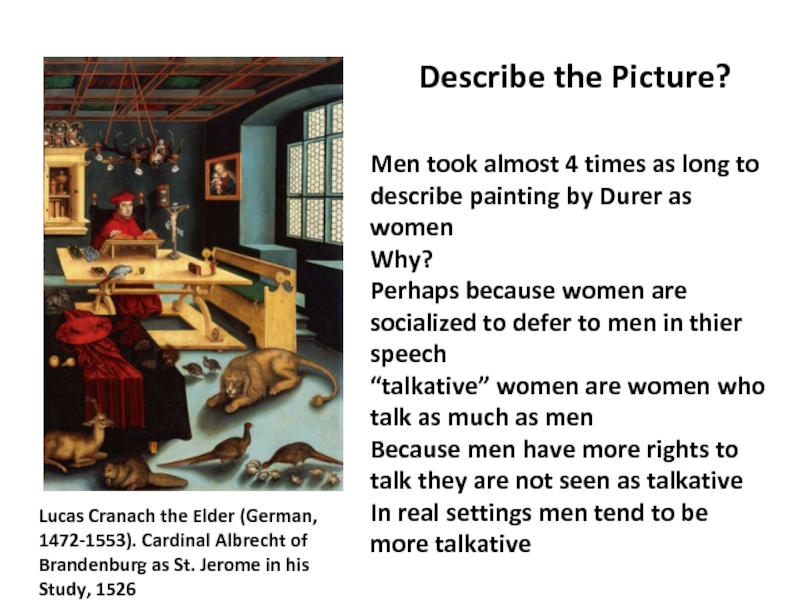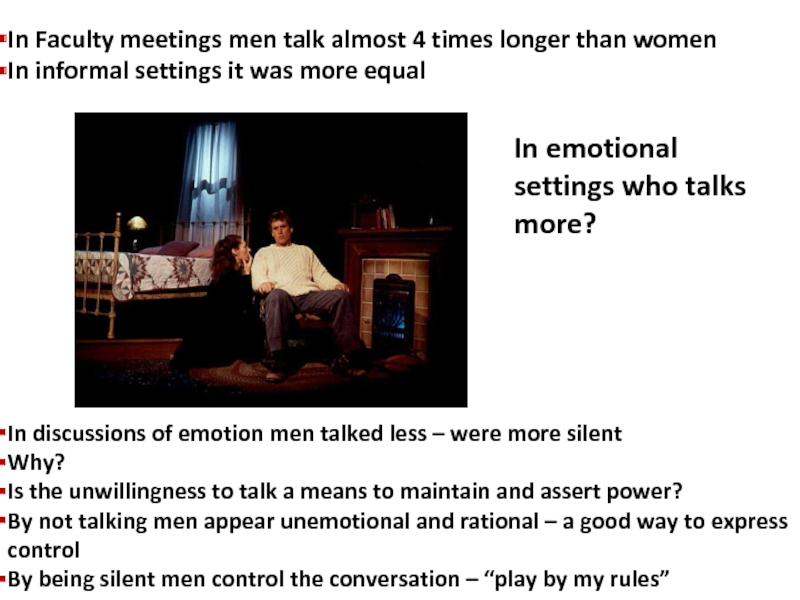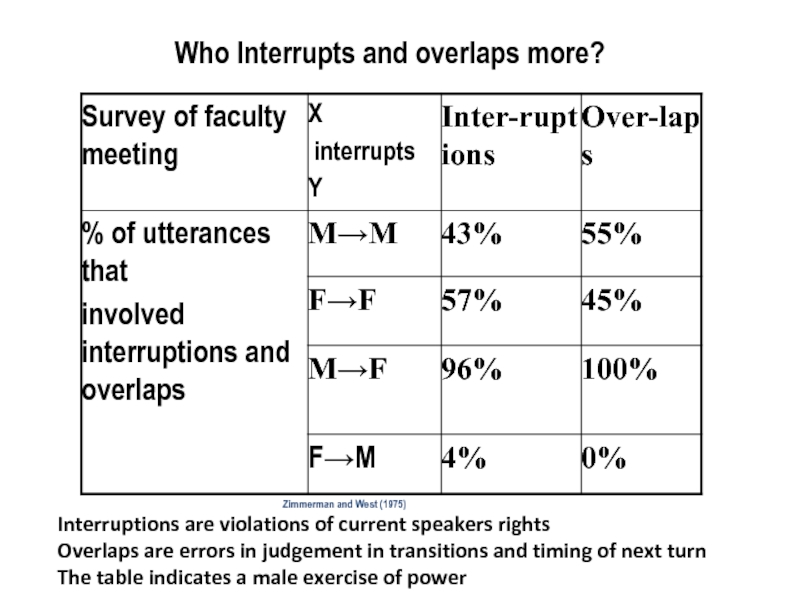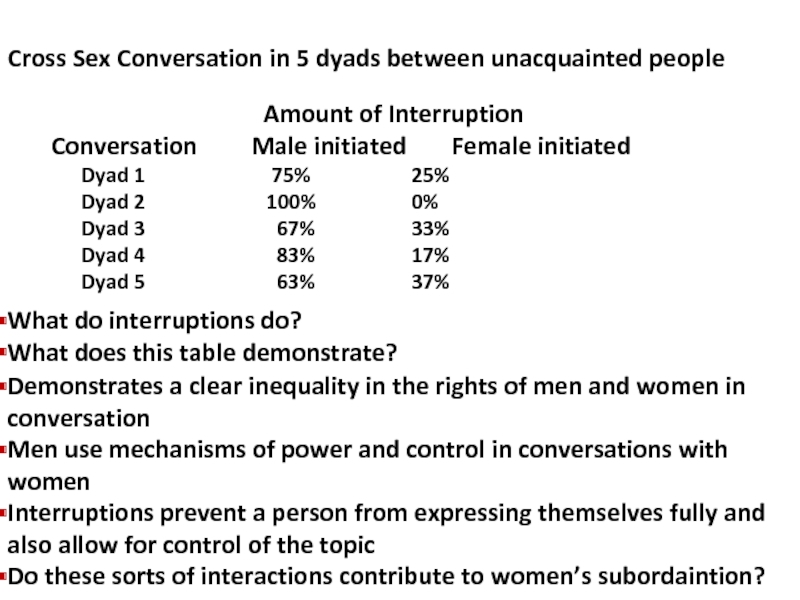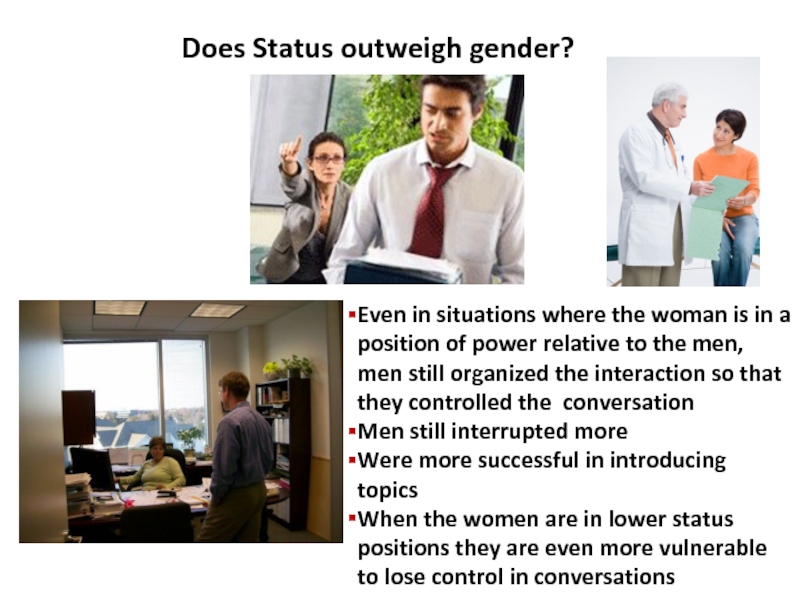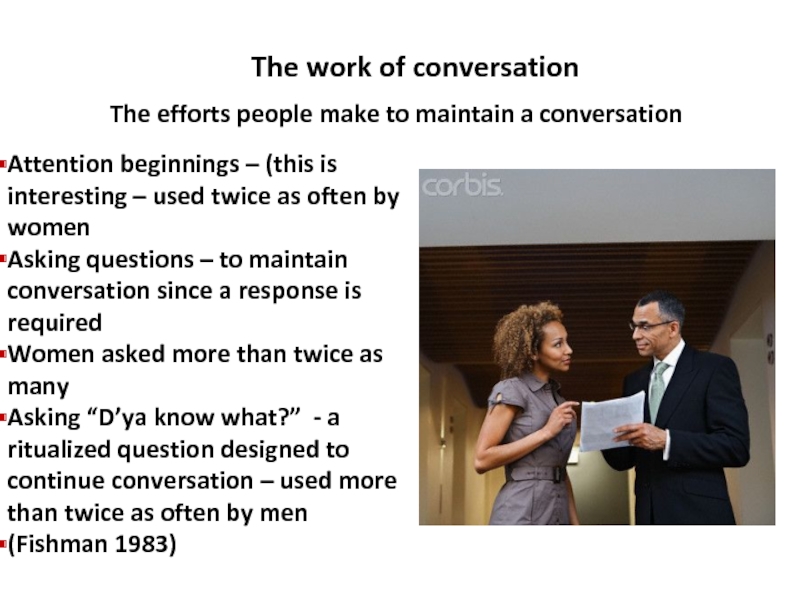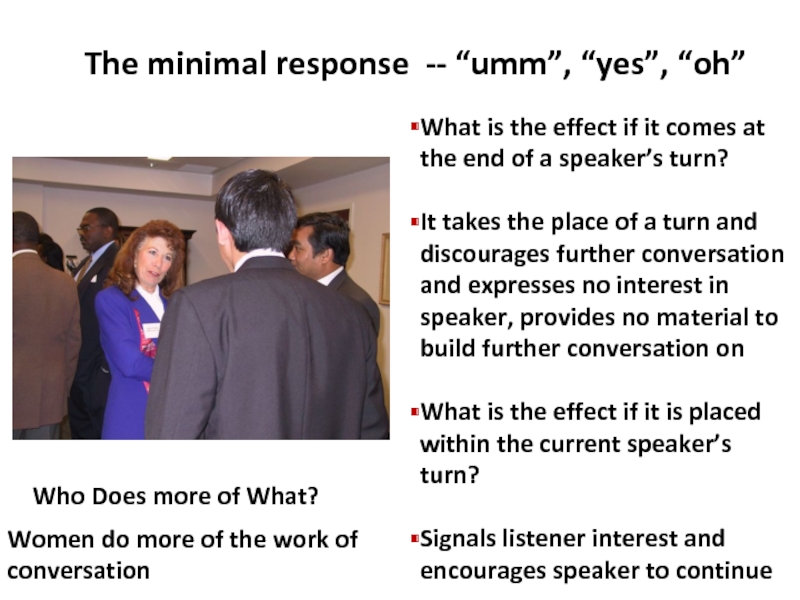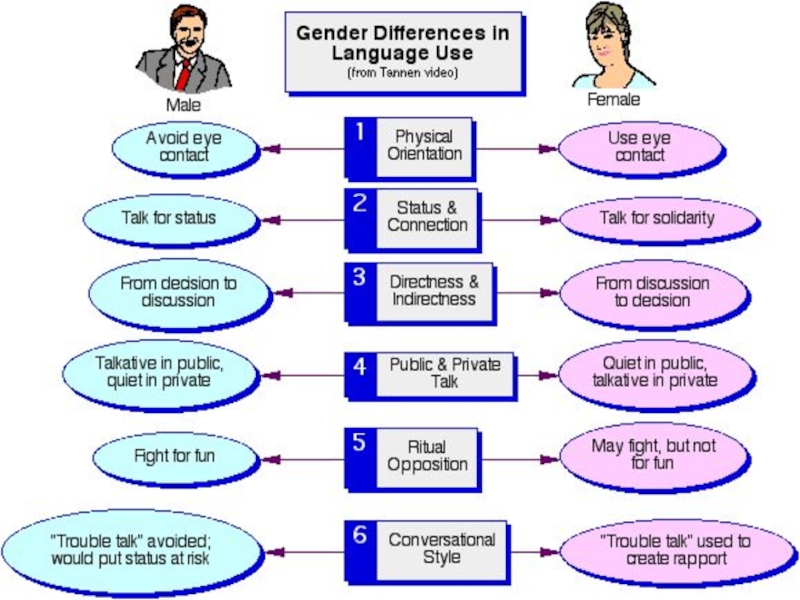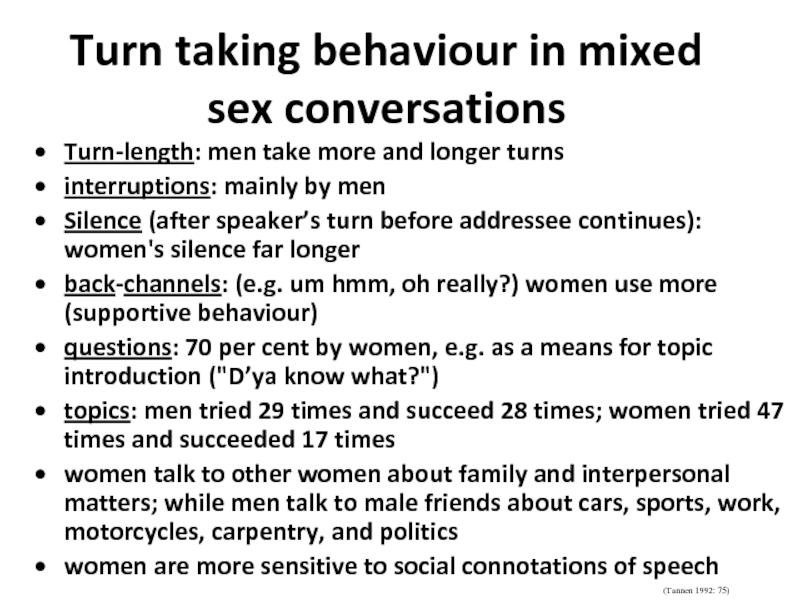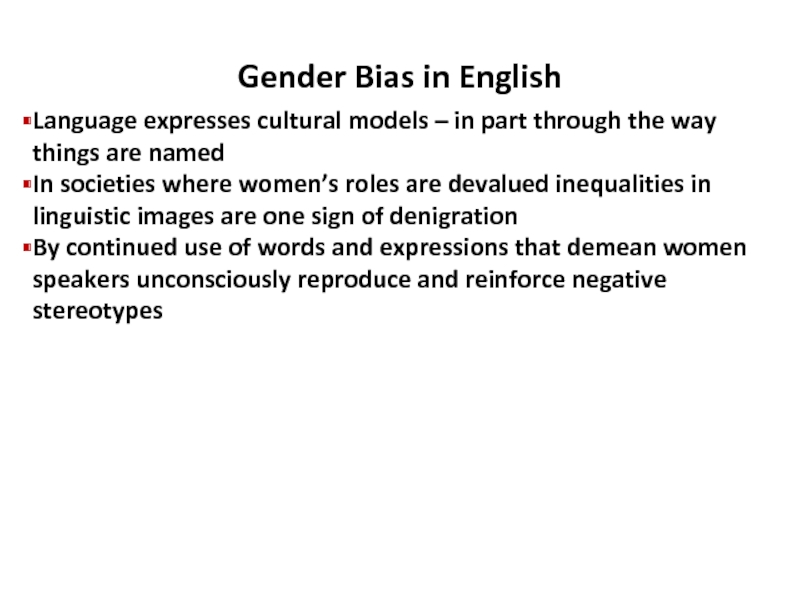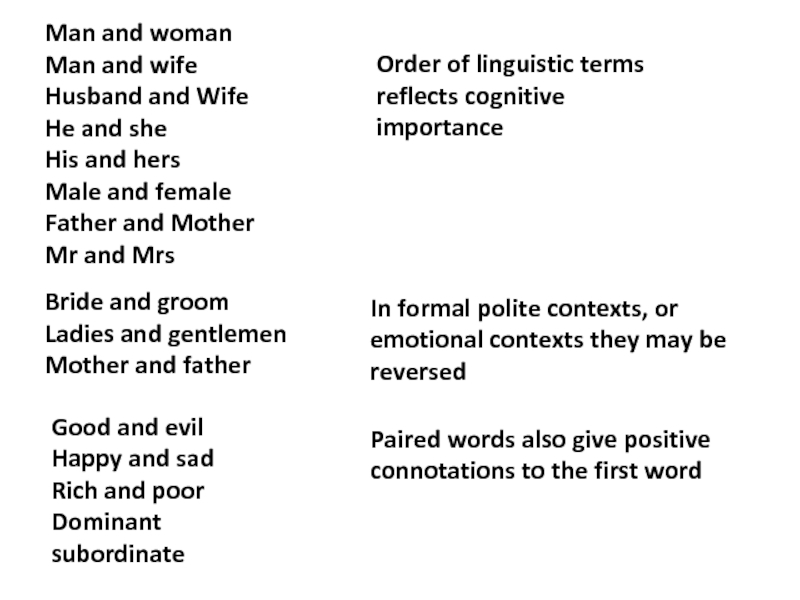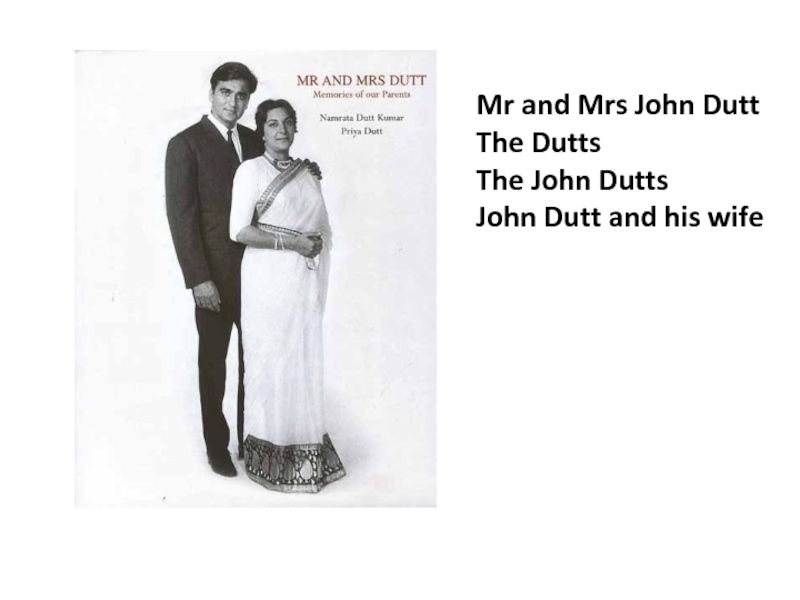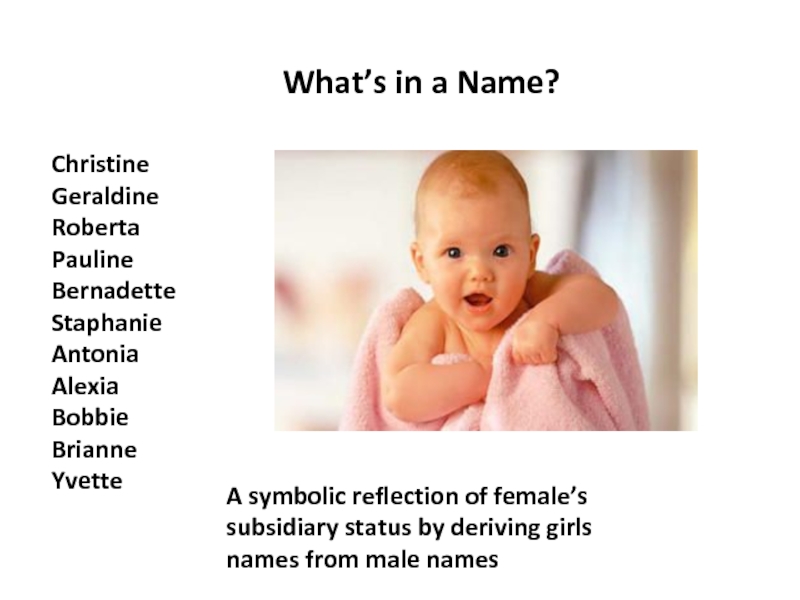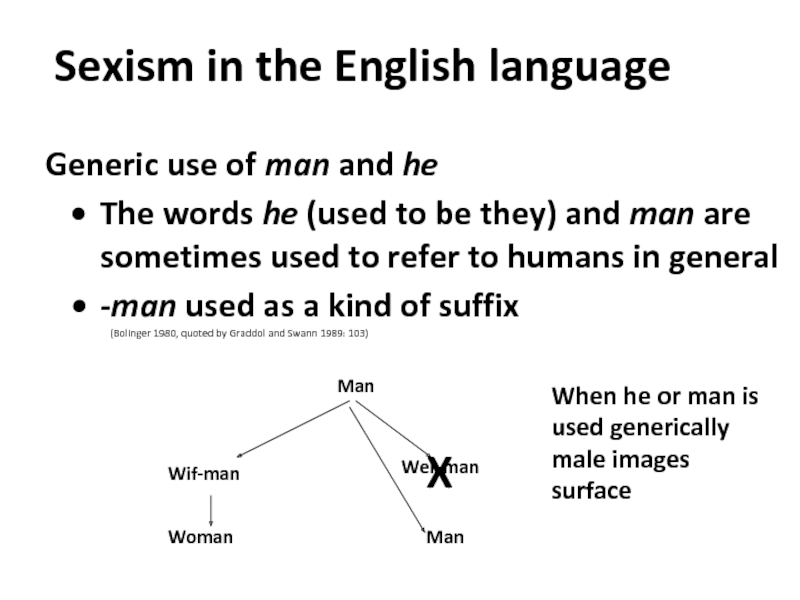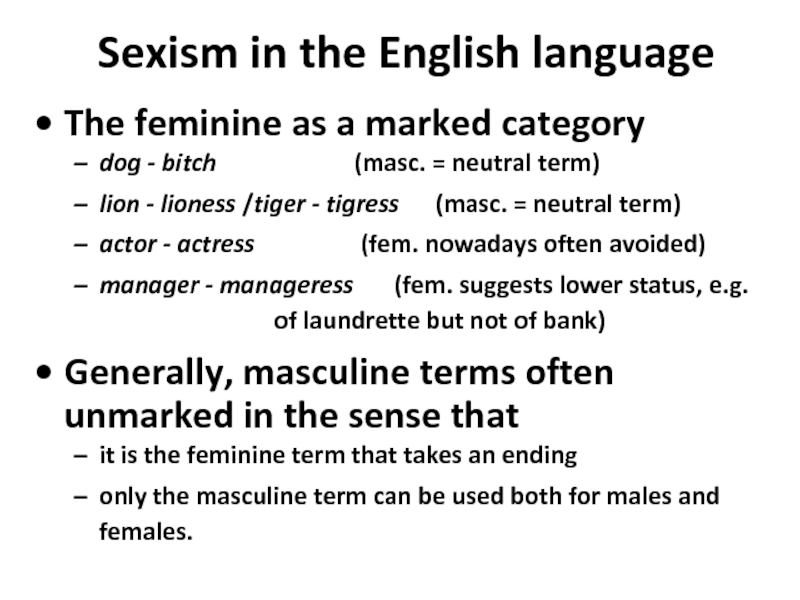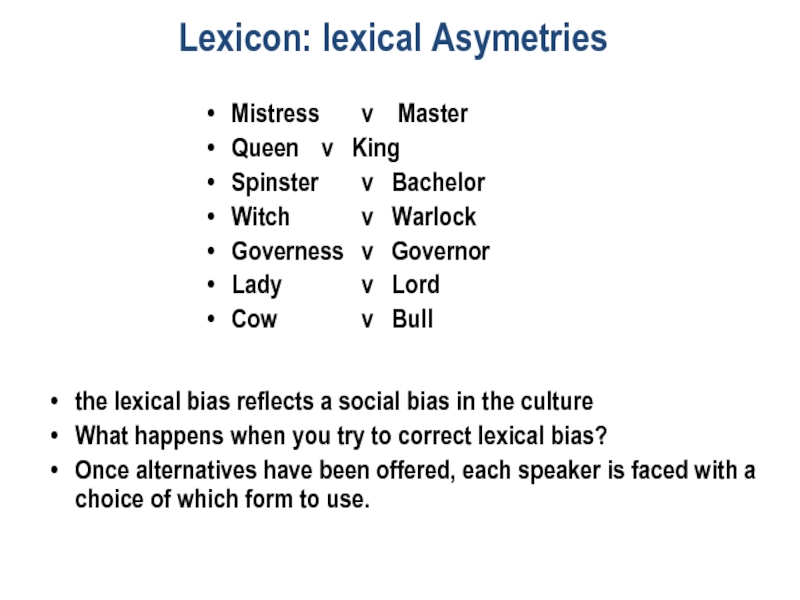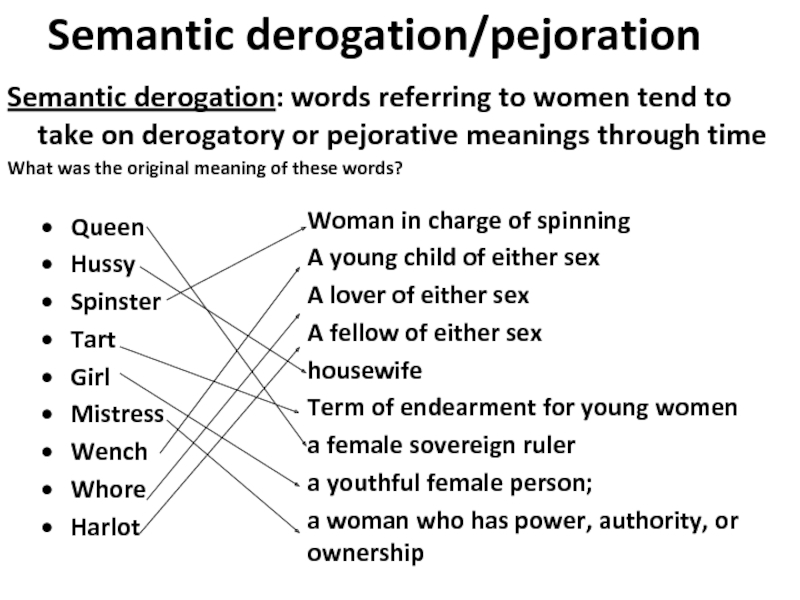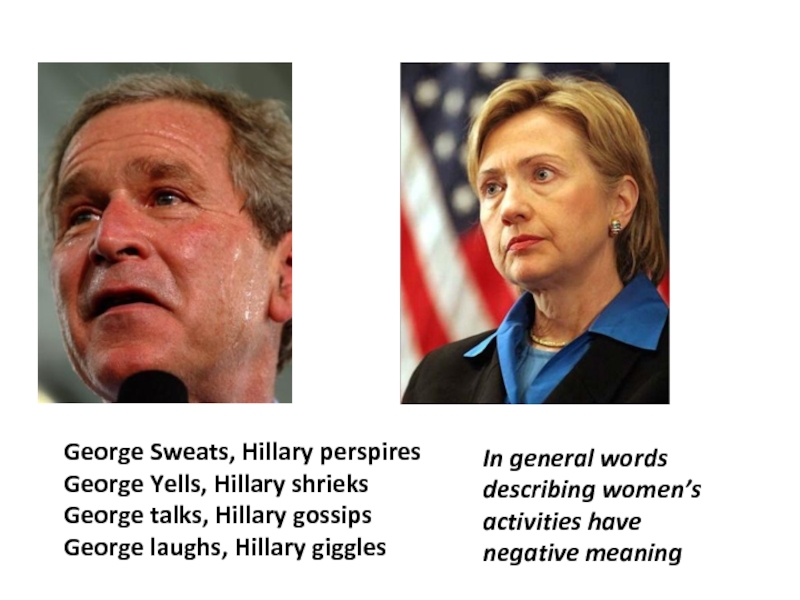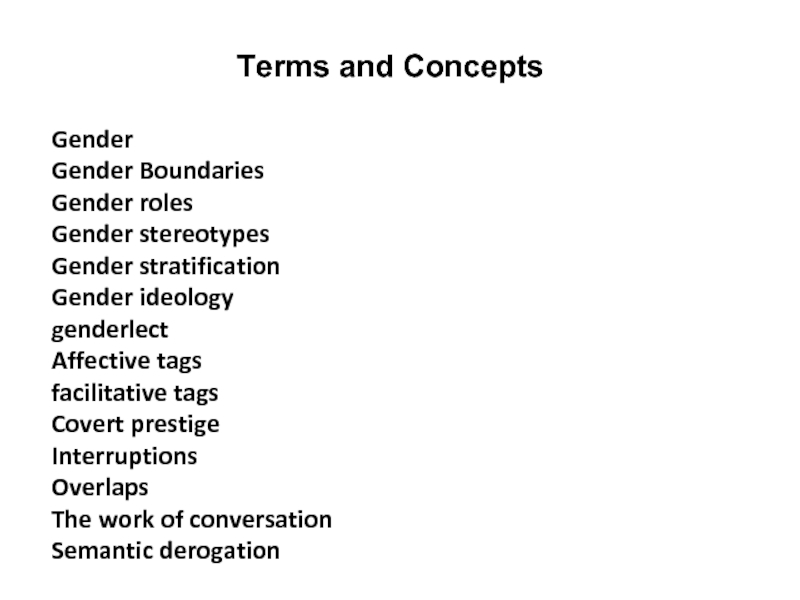- Главная
- Разное
- Дизайн
- Бизнес и предпринимательство
- Аналитика
- Образование
- Развлечения
- Красота и здоровье
- Финансы
- Государство
- Путешествия
- Спорт
- Недвижимость
- Армия
- Графика
- Культурология
- Еда и кулинария
- Лингвистика
- Английский язык
- Астрономия
- Алгебра
- Биология
- География
- Детские презентации
- Информатика
- История
- Литература
- Маркетинг
- Математика
- Медицина
- Менеджмент
- Музыка
- МХК
- Немецкий язык
- ОБЖ
- Обществознание
- Окружающий мир
- Педагогика
- Русский язык
- Технология
- Физика
- Философия
- Химия
- Шаблоны, картинки для презентаций
- Экология
- Экономика
- Юриспруденция
Gender and Language презентация
Содержание
- 1. Gender and Language
- 2. Sex Versus Gender Sex refers to
- 3. Gender Boundaries We demand that the categories
- 4. Felicita Vestvali 1824 - 1880 How
- 5. Masculine Traits self promotion & achievement
- 6. focus on others, community Feminine Traits
- 7. tasks and activities a culture assigns
- 8. Gender Stereotypes
- 12. Gender Inequality
- 13. Gender is an important dimension of social
- 14. How do we measure gender stratification? .
- 15. Language and gender Three issues: Do women
- 16. Genderlects What a divine idea! What a terrific idea!
- 17. Give me the cup The Cup Could
- 18. Shit! You’ve put the peanut butter
- 19. -ing symbolizes female Phonological variations Men Women
- 20. Grammatical Variants Jenny Cheshire – adventure playground use. Boys used non-standard form more than girls
- 21. combination of rhythm, volume and pitch overlaying
- 22. Because rising pitch is an indicator of
- 23. Affective tags "are used not to signal
- 24. Subordinate groups must be polite Woman’s
- 25. women are more conscious of prestige norms
- 26. Women use more hedge words Use mitigation
- 27. Who talks more? Who interrupts more? Who
- 28. Men and women in conversation Who talks
- 29. Lucas Cranach the Elder (German, 1472-1553). Cardinal
- 30. In Faculty meetings men talk almost 4
- 31. Who Interrupts and overlaps more? Zimmerman and
- 32. Cross Sex Conversation in 5 dyads between
- 33. Even in situations where the woman is
- 34. The work of conversation Attention beginnings –
- 35. The minimal response -- “umm”, “yes”, “oh”
- 37. Turn taking behaviour in mixed sex conversations
- 38. Gender Bias in English Language expresses cultural
- 39. Man and woman Man and wife Husband
- 40. Mr and Mrs John Dutt The Dutts
- 41. What’s in a Name? Christine Geraldine Roberta
- 42. Generic use of man and he The
- 43. Sexism in the English language The feminine
- 44. Lexicon: lexical Asymetries Mistress v
- 45. Semantic derogation: words referring to women tend
- 46. George Sweats, Hillary perspires George Yells, Hillary
- 47. Terms and Concepts Gender Gender Boundaries Gender
Слайд 2Sex Versus Gender
Sex refers to biological differences,
Gender refers
“The ways members of the two sexes are perceived, evaluated and expected to behave.”
(what different cultures make of sex.)
Слайд 3Gender Boundaries
We demand that the categories of male and female be
since gender is culturally constructed the boundaries are conceptual rather than physical
the boundaries are dynamic, eg. now it is acceptable for men to wear earrings.
Boundaries require markers to indicate gender such as:
Voice
Physique
Dress
Behaviour
Hair style
Kinetics
Language use
Слайд 4Felicita Vestvali
1824 - 1880
How do we react when someone seems
Gender identity
New York opera star who specialized in singing contralto "trouser roles."
Why is it important
social intercourse requires that the interacting parties know to which gender category `the other' belongs
Слайд 7 tasks and activities a culture assigns to the sexes –
Gender stereotypes:
oversimplified but strongly held ideas of the characteristics of men and women.
Gender stratification:
an unequal distribution of rewards (socially valued resources, power, prestige, and personal freedom) between men and women, reflecting their different positions in social hierarchy – a division in society where all members are hierarchically ranked according to gender
Gender ideology
A system of thoughts and values that legitimizes sex roles, statuses and customary behaviour
Gender roles:
Слайд 13Gender is an important dimension of social inequality
Gender stratification frequently takes
Do women in our society have a second class status relative to men?
If so How?
How do we measure gender stratification?
Слайд 14How do we measure gender stratification?
.
Economics
Politics
Religion
Legal rights
prestige
Autonomy
Education
Employment
Health
ideology
How deferential they are
Freedom to choose marriage partner, profession, and conception. Etc.
We can also look at the roles played by women and the value society places on them roles
Generally: Differential access to Wealth, Power, and Prestige
Слайд 15Language and gender
Three issues:
Do women and men speak a different language
Do women and men behave differently in conversations? – Use language differently
Gender bias in English
Men and women are socialized to express themselves in different ways in accordance with cultural norms that teach and reinforce differentiated gender roles
Слайд 17Give me the cup
The Cup
Could you please give me the cup
Would
Give me the cup, won’t you
Can you give me the cup?
I can’t reach that cup
I want that cup
Can you get that cup for me?
I need that cup
THE CUP
Слайд 18
Shit! You’ve put
the peanut butter in
the fridge again!
Oh dear! You’ve put
the
Men often use socially disfavored variants of sociolinguistic variables while women tend to avoid these in favor of socially more favored variants.
Genderlects
Слайд 19-ing symbolizes female
Phonological variations
Men Women
Runnin running
Less use of post-vocalic /-r/ greater use of
“dis and dat”” “this and that”
Double negation single negation
Gender is a factor in the choice of variant
What motivates boys to choose /in/ and girls /ing/
/in/ form is used in informal settings and /ing/ in more formal contexts
The /ing/ variant therefore carries social meaning – i.e. it symbolizes formality
/ing/may also be associated with compliance and politeness
formality, politeness, compliance
with female
– go together
Слайд 20Grammatical Variants
Jenny Cheshire – adventure playground use. Boys used non-standard form
Слайд 21combination of rhythm, volume and pitch overlaying entire utterances
In general women
In other words women talk melodically and faster than men who are more monotone and slower
Intonation
What does talking melodically and faster imply?
What does talking in a monotone and slower imply?
Слайд 22Because rising pitch is an indicator of questions some linguists believe
Melodically and faster - emotionality and natural impulses
Monotone and slower - control and restraint
This is a cultural interpretation
Which does our society value?
Masculine speech melodies can be heard to be metaphors for control
female speech melodies as uncontrolled
women’s speech behaviour is negatively evaluated in relation to male norms
Women’s frequent changes in pitch and volume may serve the function of attracting and holding the listeners attention
Слайд 23Affective tags "are used not to signal uncertainty on the part
Open the door for me, could you?
His portraits are quite static by comparison, aren't they?
Affective tags are further subdivided into two kinds: softeners like the first example above, which conventionally mitigate the force of what would otherwise be an impolite demand
facilitative tags like the second example, which invite the listener to take a conversational turn to comment on the speaker's assertion.
Women use more tag questions than men
Слайд 24
Subordinate groups must be polite
Woman’s role as guardian of society’s values
Vernacular
because women model their behaviour on middle class styles men covertly prefer “working class” speech
Women have less access to power and status: they ‘make up’ for this by their preferences for the prestige (standard) linguistic forms. This is thought to give them respect and some status.
Explanations for differences
Слайд 25women are more conscious of prestige norms and strive to use
Women and men are socialized in different ways which is reflected in their language use patterns.
women may be more status conscious than men because:
society sets more standards for women and
Women’s typical activities do not confer status itself.
Women don`t want to use lower class language because of the associations made with lower class people
(8) Women and men have different networks which lead to women and men using different ways of speaking.
(9) many of the jobs available to women require standard form
Explanations for differences
Слайд 26Women use more hedge words
Use mitigation to blunt direct statement
More tag
Men and women vary in frequencies with which they use – particular sounds (pronunciation), prosodic features (intonation, velocity) grammar and choices of vocabulary. i.e. women and men use have different styles of speaking (although for the most part we speak the same)
Linguistic and stylistic variations arise from, reflect and reinforce existing gender differences
Gender is an aspect of identity that is enacted through speech practices
careful speech by women reflects their position in a hierarchical system of gender in which they are culturally relegated to second place
Слайд 27Who talks more?
Who interrupts more?
Who introduces topics?
Who asks questions?
Who is more
Do Men and Women Use Language Differently?
Слайд 28Men and women in conversation
Who talks more?
Stereotype says that women talk
Proverbs:
A woman's tongue wags like a lamb's tail.
Foxes are all tail and women are all tongue.
The North Sea will sooner be found wanting in water than a woman be at a loss for a word.
Слайд 29Lucas Cranach the Elder (German, 1472-1553). Cardinal Albrecht of Brandenburg as
Describe the Picture?
Men took almost 4 times as long to describe painting by Durer as women
Why?
Perhaps because women are socialized to defer to men in thier speech
“talkative” women are women who talk as much as men
Because men have more rights to talk they are not seen as talkative
In real settings men tend to be more talkative
Слайд 30In Faculty meetings men talk almost 4 times longer than women
In
In discussions of emotion men talked less – were more silent
Why?
Is the unwillingness to talk a means to maintain and assert power?
By not talking men appear unemotional and rational – a good way to express control
By being silent men control the conversation – “play by my rules”
In emotional settings who talks more?
Слайд 31Who Interrupts and overlaps more?
Zimmerman and West (1975)
Interruptions are violations of
Overlaps are errors in judgement in transitions and timing of next turn
The table indicates a male exercise of power
Слайд 32Cross Sex Conversation in 5 dyads between unacquainted people
Amount of Interruption
Conversation Male
Dyad 1 75% 25%
Dyad 2 100% 0%
Dyad 3 67% 33%
Dyad 4 83% 17%
Dyad 5 63% 37%
Demonstrates a clear inequality in the rights of men and women in conversation
Men use mechanisms of power and control in conversations with women
Interruptions prevent a person from expressing themselves fully and also allow for control of the topic
Do these sorts of interactions contribute to women’s subordaintion?
What do interruptions do?
What does this table demonstrate?
Слайд 33Even in situations where the woman is in a position of
Men still interrupted more
Were more successful in introducing topics
When the women are in lower status positions they are even more vulnerable to lose control in conversations
Does Status outweigh gender?
Слайд 34The work of conversation
Attention beginnings – (this is interesting – used
Asking questions – to maintain conversation since a response is required
Women asked more than twice as many
Asking “D’ya know what?” - a ritualized question designed to continue conversation – used more than twice as often by men
(Fishman 1983)
The efforts people make to maintain a conversation
Слайд 35The minimal response -- “umm”, “yes”, “oh”
What is the effect if
It takes the place of a turn and discourages further conversation and expresses no interest in speaker, provides no material to build further conversation on
What is the effect if it is placed within the current speaker’s turn?
Signals listener interest and encourages speaker to continue
Who Does more of What?
Women do more of the work of conversation
Слайд 37Turn taking behaviour in mixed sex conversations
Turn-length: men take more and
interruptions: mainly by men
Silence (after speaker’s turn before addressee continues): women's silence far longer
back-channels: (e.g. um hmm, oh really?) women use more (supportive behaviour)
questions: 70 per cent by women, e.g. as a means for topic introduction ("D’ya know what?")
topics: men tried 29 times and succeed 28 times; women tried 47 times and succeeded 17 times
women talk to other women about family and interpersonal matters; while men talk to male friends about cars, sports, work, motorcycles, carpentry, and politics
women are more sensitive to social connotations of speech
(Tannen 1992: 75)
Слайд 38Gender Bias in English
Language expresses cultural models – in part through
In societies where women’s roles are devalued inequalities in linguistic images are one sign of denigration
By continued use of words and expressions that demean women speakers unconsciously reproduce and reinforce negative stereotypes
Слайд 39Man and woman
Man and wife
Husband and Wife
He and she
His and hers
Male
Father and Mother
Mr and Mrs
Order of linguistic terms reflects cognitive importance
Good and evil
Happy and sad
Rich and poor
Dominant subordinate
Bride and groom
Ladies and gentlemen
Mother and father
In formal polite contexts, or emotional contexts they may be reversed
Paired words also give positive connotations to the first word
Слайд 41What’s in a Name?
Christine
Geraldine
Roberta
Pauline
Bernadette
Staphanie
Antonia
Alexia
Bobbie
Brianne
Yvette
A symbolic reflection of female’s subsidiary status by
Слайд 42Generic use of man and he
The words he (used to be
-man used as a kind of suffix (Bolinger 1980, quoted by Graddol and Swann 1989: 103)
Sexism in the English language
Man
X
When he or man is used generically male images surface
Слайд 43Sexism in the English language
The feminine as a marked category
dog - bitch (masc. = neutral term)
lion - lioness /tiger - tigress (masc. = neutral term)
actor - actress (fem. nowadays often avoided)
manager - manageress (fem. suggests lower status, e.g. of laundrette but not of bank)
Generally, masculine terms often unmarked in the sense that
it is the feminine term that takes an ending
only the masculine term can be used both for males and females.
Слайд 44Lexicon: lexical Asymetries
Mistress v Master
Queen v King
Spinster
Witch v Warlock
Governess v Governor
Lady v Lord
Cow v Bull
the lexical bias reflects a social bias in the culture
What happens when you try to correct lexical bias?
Once alternatives have been offered, each speaker is faced with a choice of which form to use.
Слайд 45Semantic derogation: words referring to women tend to take on derogatory
What was the original meaning of these words?
Queen
Hussy
Spinster
Tart
Girl
Mistress
Wench
Whore
Harlot
Woman in charge of spinning
A young child of either sex
A lover of either sex
A fellow of either sex
housewife
Term of endearment for young women
a female sovereign ruler
a youthful female person;
a woman who has power, authority, or ownership
Semantic derogation/pejoration
Слайд 46George Sweats, Hillary perspires
George Yells, Hillary shrieks
George talks, Hillary gossips
George laughs,
In general words describing women’s activities have negative meaning
Слайд 47Terms and Concepts
Gender
Gender Boundaries
Gender roles
Gender stereotypes
Gender stratification
Gender ideology
genderlect
Affective
facilitative tags
Covert prestige
Interruptions
Overlaps
The work of conversation
Semantic derogation

